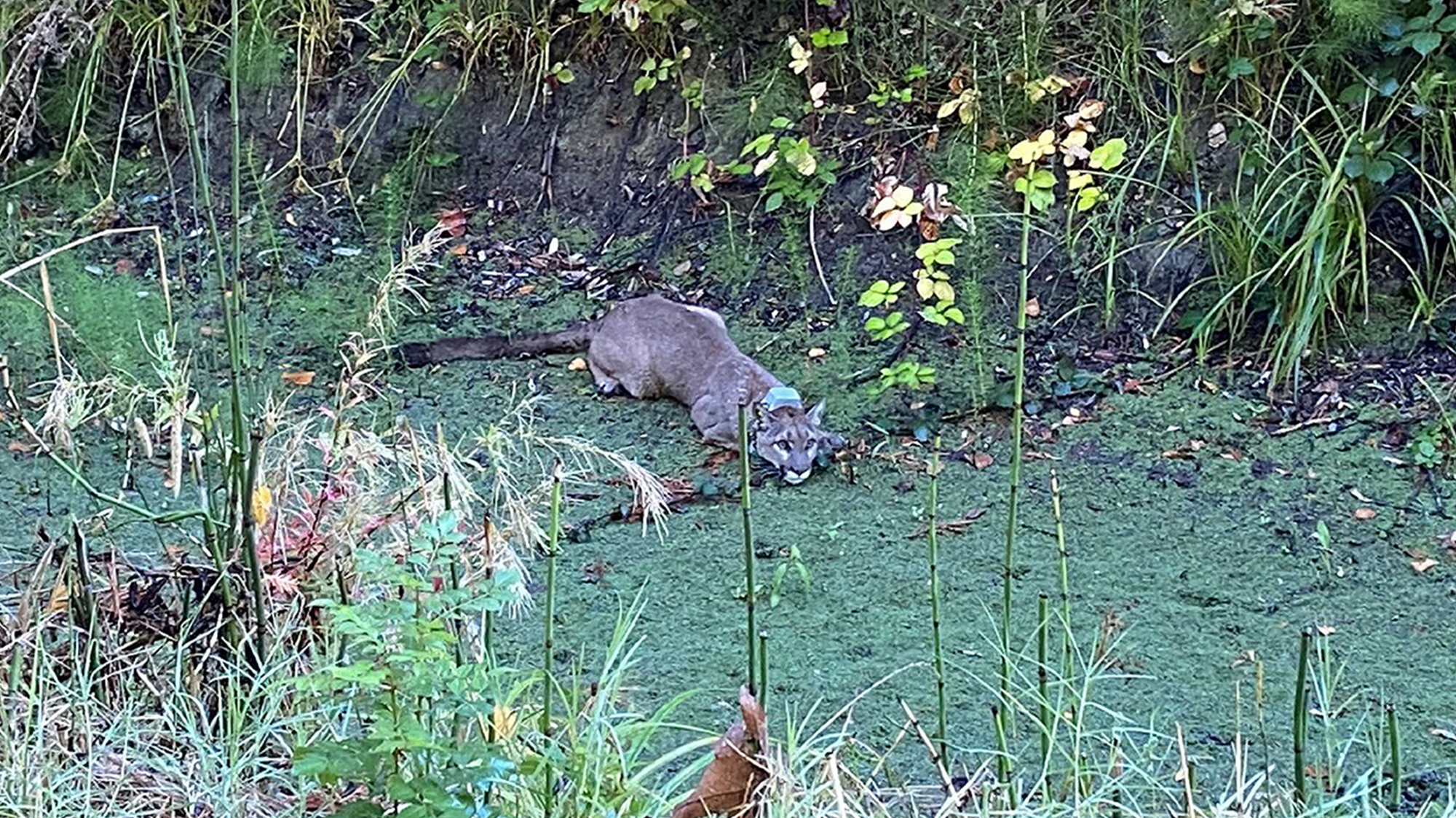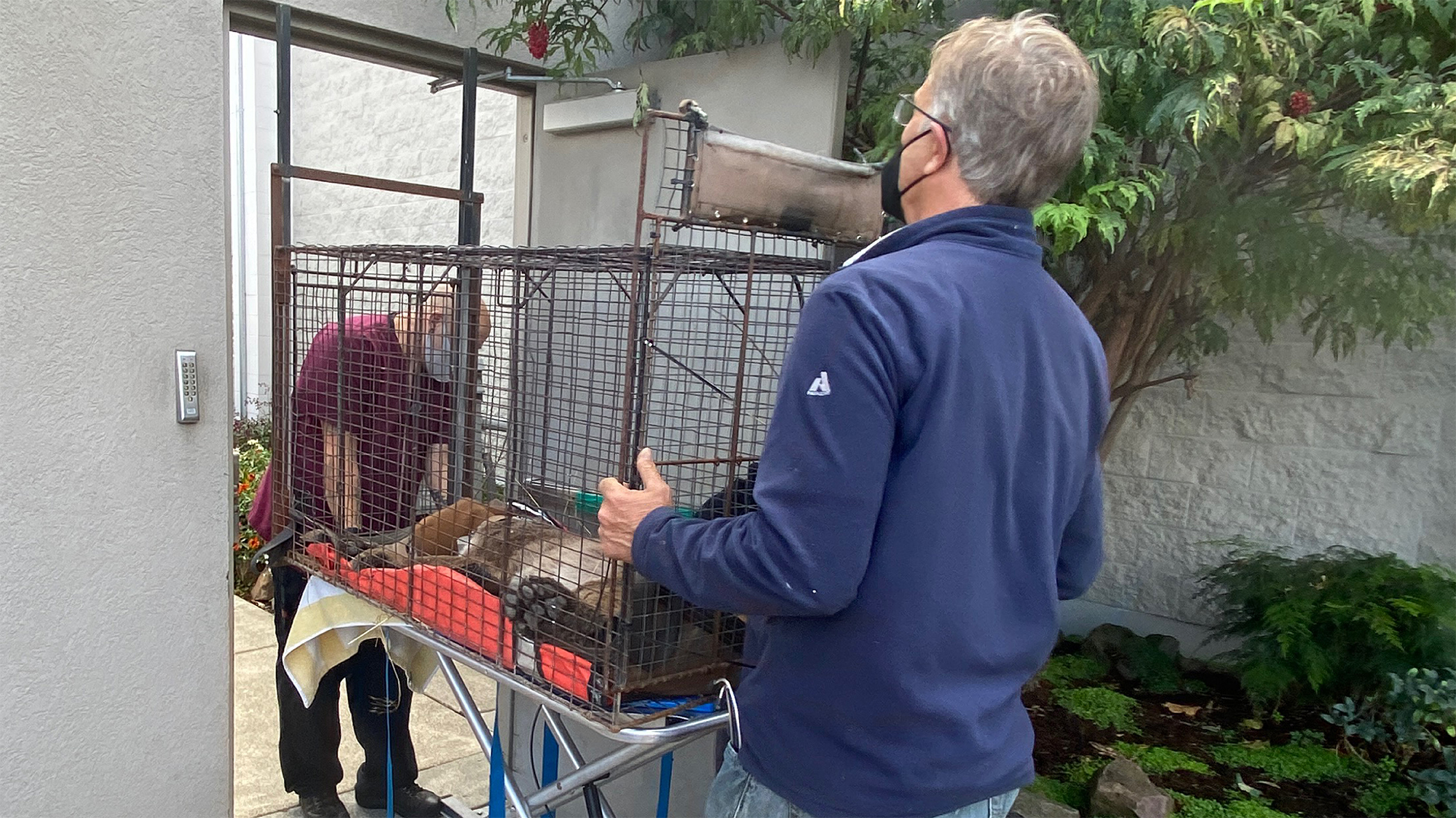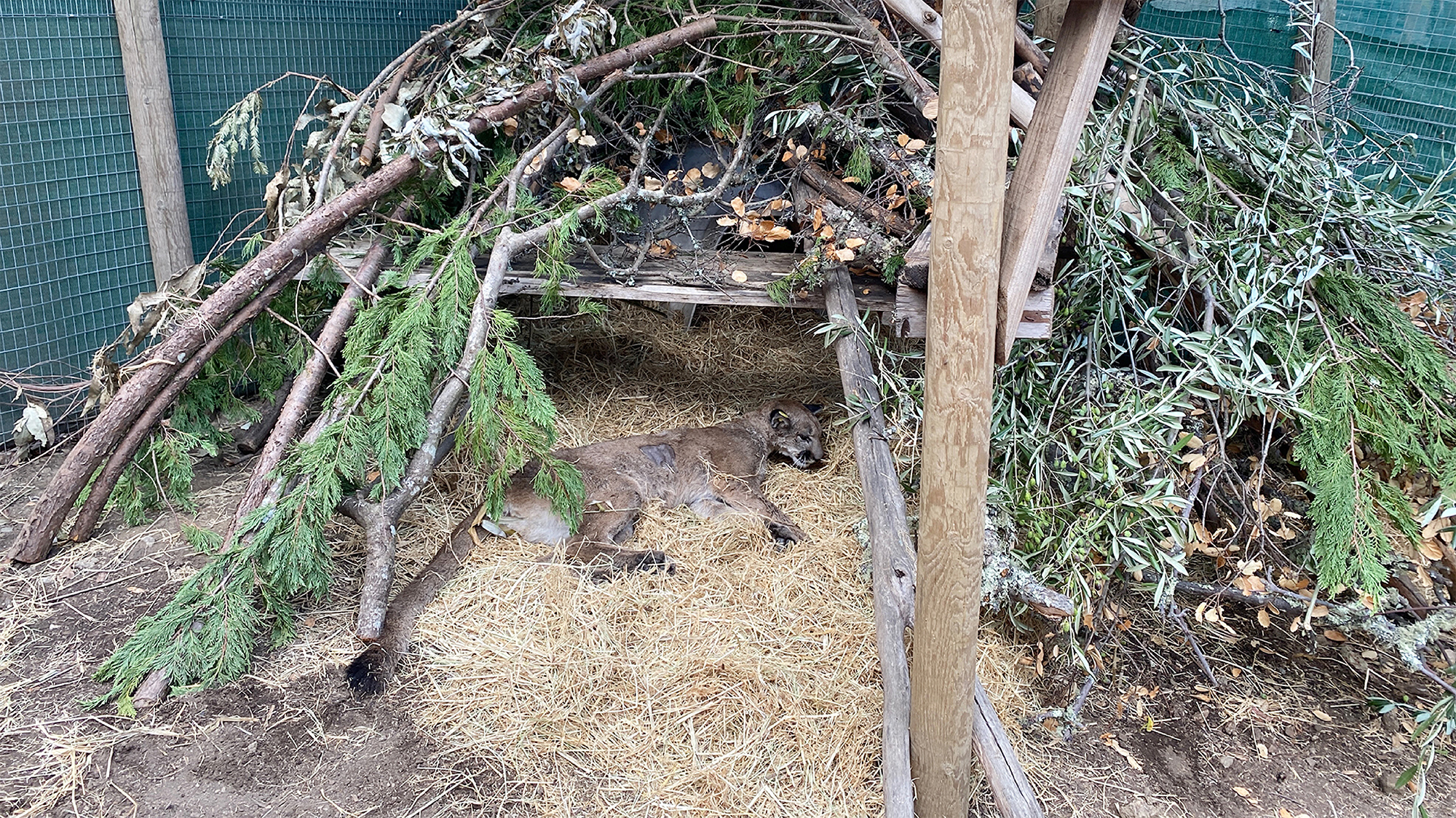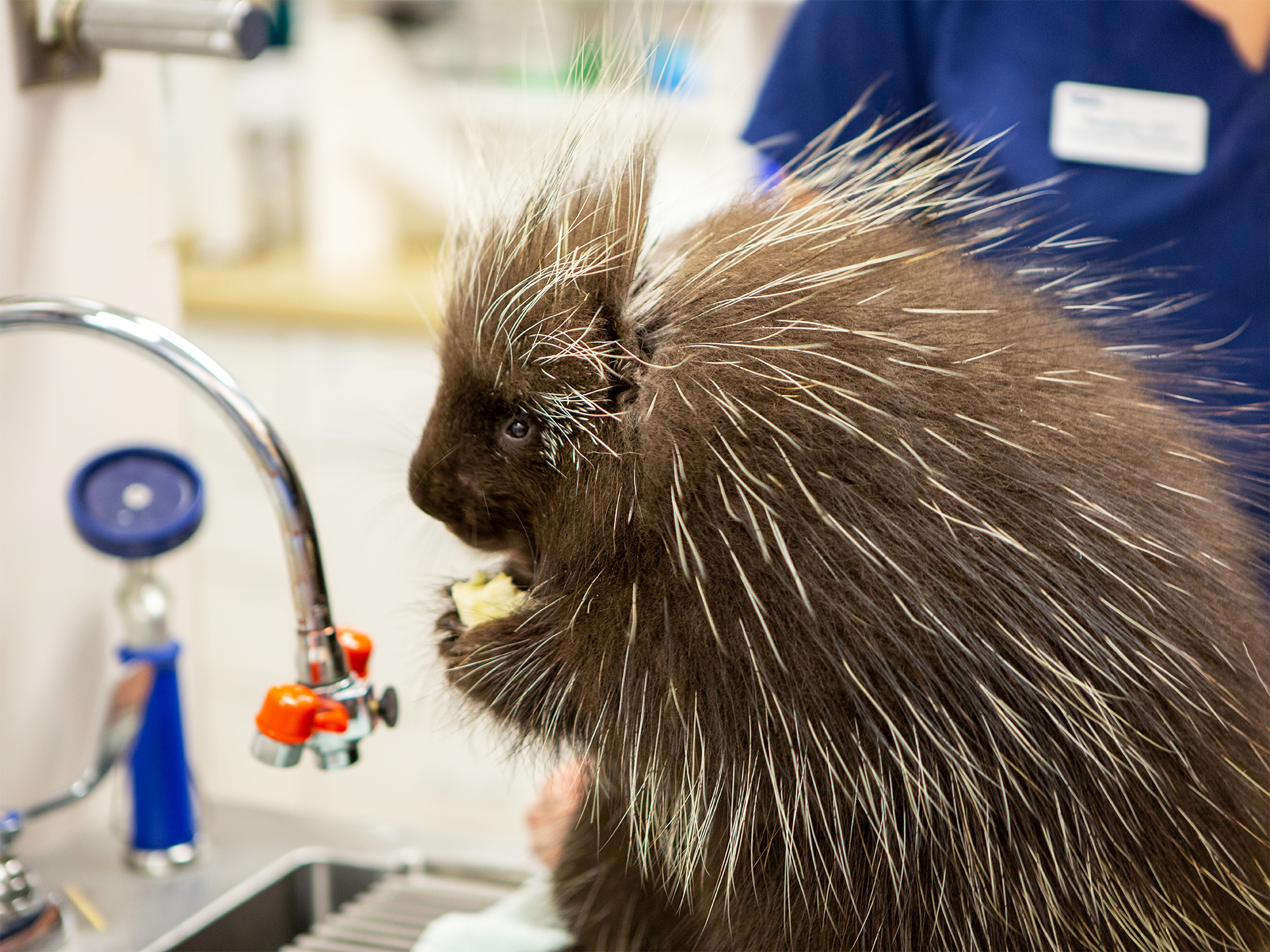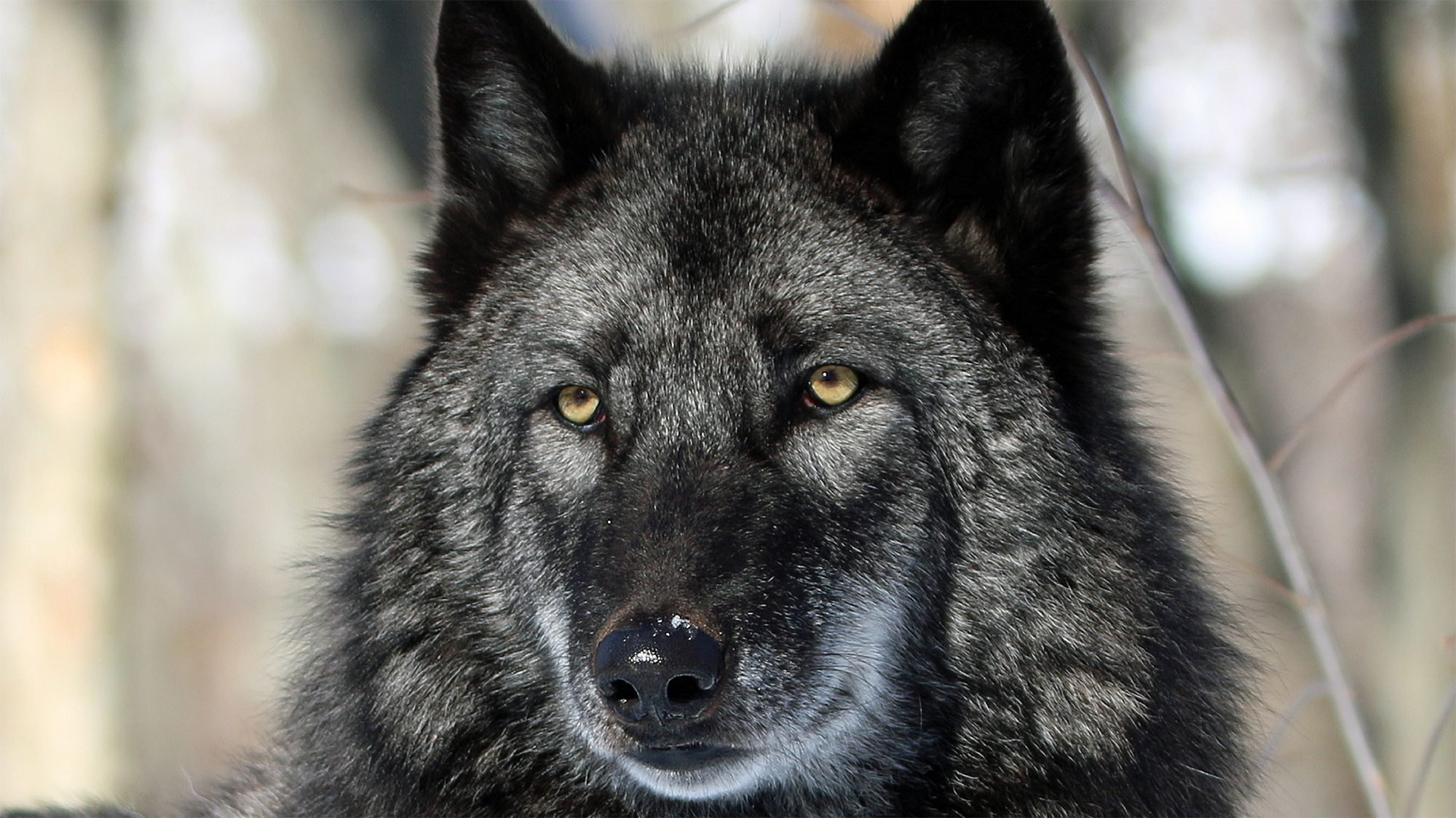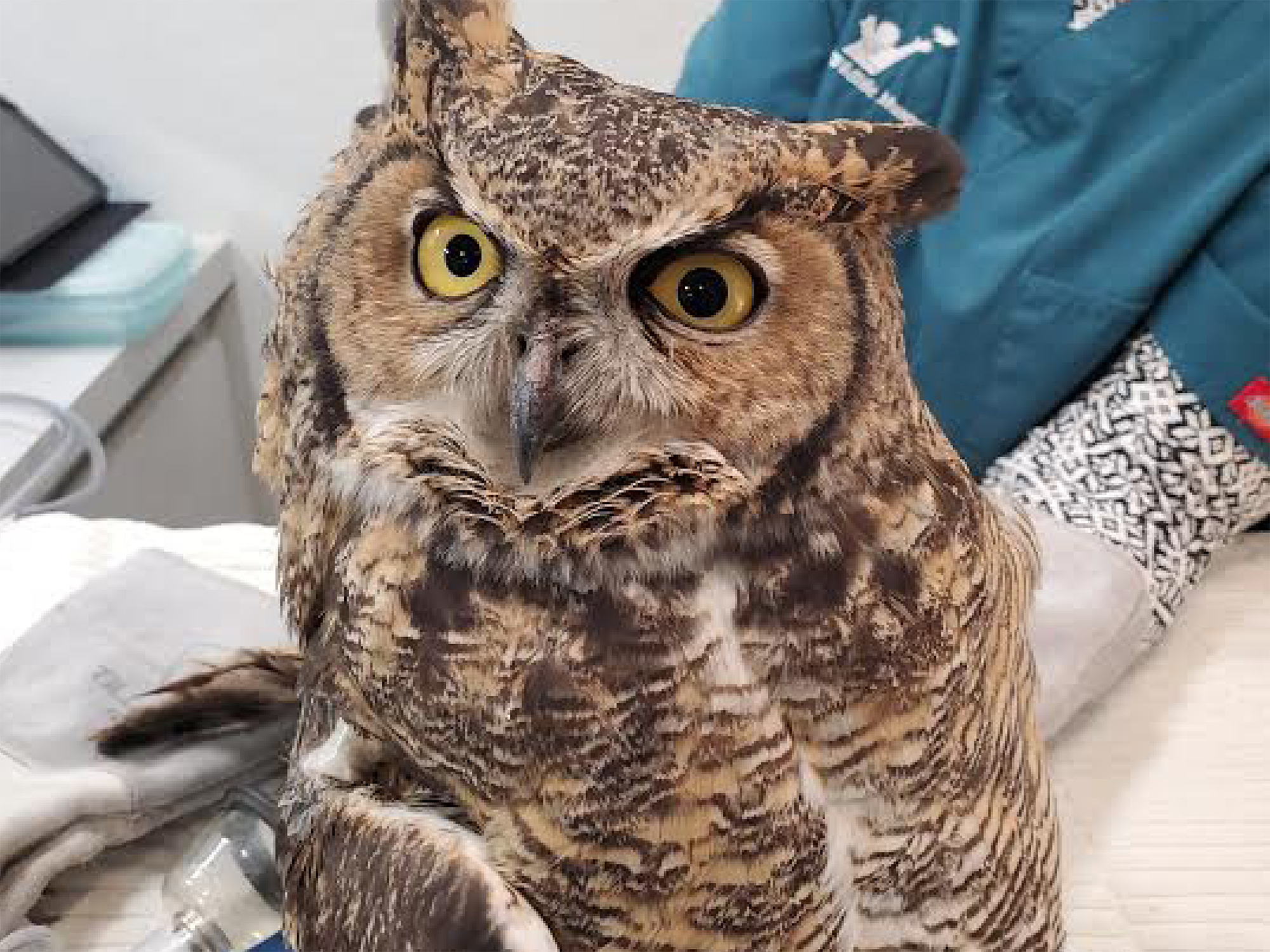Quinton Martins, PhD, first saw “Wobbly” in 2017 while he was tracking mountain lions in Sonoma Valley, California. The cat was only 6 months old.
“We captured video footage from trail cameras that showed she had some neurological issue,” Martins said. She had a shaking walking gait, so she was given the name Wobbly.
“She was still with her mother at the time, a dependent cub, and we didn’t think she was going to survive,” he said. “She moved like she was intoxicated. She’d place her feet in front of her, then would veer off to the side, and eventually, off the path.”
Martins sent footage of Wobbly to veterinarians, including local Dr. Graham Crawford, co-founder of the Wildlife Health Network. Their best guess was some congenital neurological issue, but no one could be sure without further diagnostics.
Then, to everyone’s surprise, Wobbly survived in the wild. No one knew exactly how. Photographers captured images of the tenacious mountain lion over the years, but there were no close-up interactions.
In March 2021, Martins finally got to meet the lion when she was captured by a research trap. After a thorough exam, biological sampling and the installation of a GPS satellite tracking color fitted to monitor her movements, she was renamed “P26” in the tracking system. Martins and the Living With Lions project began monitoring her movements.
At the time of capture, she was 4.5 years old. What would they learn about how far she was traveling, what she was eating, and how she hunted? Would she stay fed, face diseases, avoid cars, or enjoy solitude and quiet as one of nature’s big-cat predators in an area full of people and animals?
The GPS tracking collar offered insight: “She was consuming adult-sized deer on a fairly regular basis,” Martins said. “She only consumed one sheep – the only livestock she attacked during her tracked travels.”
They also learned that she mated with a local male, P13. Three months later, Wobbly gave birth to two kittens, but abandoned them the same day.
“Perhaps she knew she wouldn’t be able to look after them, with her handicap,” he said.
On October 18, 2021, Martins saw Wobbly in the wild for the last time. Local police had called in the experts to respond to a mountain lion sighting. Normally, with a healthy animal on the move, Martins would have advised them to leave her alone to walk off. But she didn’t.
In daylight, she was "sitting like a sphinx,” Martins said, in full view of a nearby school. Being so visible and defenseless is unusual behavior for a mountain lion. She didn’t even seem to notice the people gathered around her. She was extremely thin and malnourished, but without obvious wounds.
Something was wrong, and Martins, Dr. Crawford, and representatives from Sonoma County Wildlife Rescue (SCWR), California Department of Fish & Wildlife, and eventually VCA Animal Care Center of Sonoma County hoped to find out what.
Remarkably unremarkable
Dr. Crawford was the link Wobbly needed for high-quality veterinary medical diagnostics. Martins and Crawford brought her, sedated, to the SCWR emergency large-cat enclosure. Then Crawford, a former veterinarian at the San Francisco Zoo, and a former colleague at VCA Animal Care Center of Sonoma County, made a call to VCA. They wanted to know if they could bring Wobbly from her observation cage to VCA for a thorough physical.
“VCA is 10 minutes from the wildlife center,” Dr. Crawford said. “And she was pretty stable under anesthesia at the time.”
They brought Wobbly in the back door at VCA Animal Care Center of Sonoma County. Veterinary neurologist Dr. Diccon Westworth ordered a battery of tests and, most importantly, an MRI of Wobbly’s brain. Veterinary internal medicine specialist Dr. Sara Schachter assisted with Wobbly’s care.
The medical team was able to fully intubate Wobbly, moving anesthesia and oxygen down the mountain lion’s airway and keeping her comfortable. Wobbly seemed as small as a bobcat to Schachter, who says the most notable thing they found was normal for an animal eating in the wild: a stomach swollen with food from a recent meal.
Dr. Dr. Schachter and Wobbly had an even closer connection than the average mountain lion. Dr. Schachter’s neighbors had seen the strange-moving mountain lion in the area in the past. It seemed Wobbly might even have paid Dr. Schachter a home visit before their operating room reintroduction.
“We looked for obvious defects, signs of systemic illness, something to explain the abnormal gait,” Schachter said. “Her chest, brain, abdomen, spinal cord and blood were remarkably unremarkable,” she said. “Everything looked so normal.”
The examination only took about two hours, and then Wobbly was on her way back to the observation cage at Sonoma County Wildlife Rescue.

“At Living With Lions, we’re focused on coexistence,” Martins says. “Mountain lions are iconic. And because they’re apex predators and range so far, protecting them means broad swaths of land need to be protected too. That makes them great ambassadors for conservation.”
We were seeing … the tail end of something
No one could find a clear cause of her deteriorating health, and things looked grim, Dr. Crawford said.
“They couldn’t make a diagnosis,” he said. “She had lost a fair bit of weight since her last examination, so what we were seeing may have been the tail end of something. The point of our work changed to collecting our thoughts and figuring out what came next.”
Over the next few days, Martins and Crawford, together with representatives of the California Department of Fish & Wildlife, considered the uncertain diagnostic results, and Wobbly ate and drank under the supervision of a wildlife veterinarian at the rescue center. However, her overall health and neurological condition didn’t seem to improve. There was going to be no way to safely return her to the wild, and she couldn’t be kept in captivity forever.
With her vital signs failing, Wobbly was compassionately euthanized at the wildlife center.
A future focused on coexistence
Wobbly’s journey and her health condition is just a snapshot of the plight of mountain lions nationwide. As humans have moved into many former roaming spaces, these wild animals have been exposed not only to human and companion animal interaction, but related biological and environmental dangers. Some of these cases have been very challenging to solve.
Martins and his team continue to find abnormalities in mountain lions, from California to Florida, because of inbreeding and accidental poisoning, as when mountain lions eat prey that have ingested poison to kill insects or rodents.
“At Living With Lions, we’re focused on coexistence,” Martins said. “Mountain lions are iconic. And because they’re apex predators and range so far, protecting them means broad swaths of land need to be protected too. That makes them great ambassadors for conservation.”
For scientists, researchers and doctors like Martins and Crawford, this starts with data.
“Part of our work is collecting data on causes of mortality,” Martins said. When Living With Lions collars and tags mountain lions to monitor in the wild, they gather biological data. When these iconic felines die, doctors want to know why. These findings will help humans understand what’s happening to wildlife on an ever-changing planet and protect animal populations from displacement, decimation and extinction. Hopefully, they’ll be able to explain why a mountain lion would roam straight into an open space, oblivious of the surrounding dangers.
Today, Martins and Crawford are still learning much from the strange-moving cub, P26, who lived a longer and wobblier life than anybody ever thought she would.
